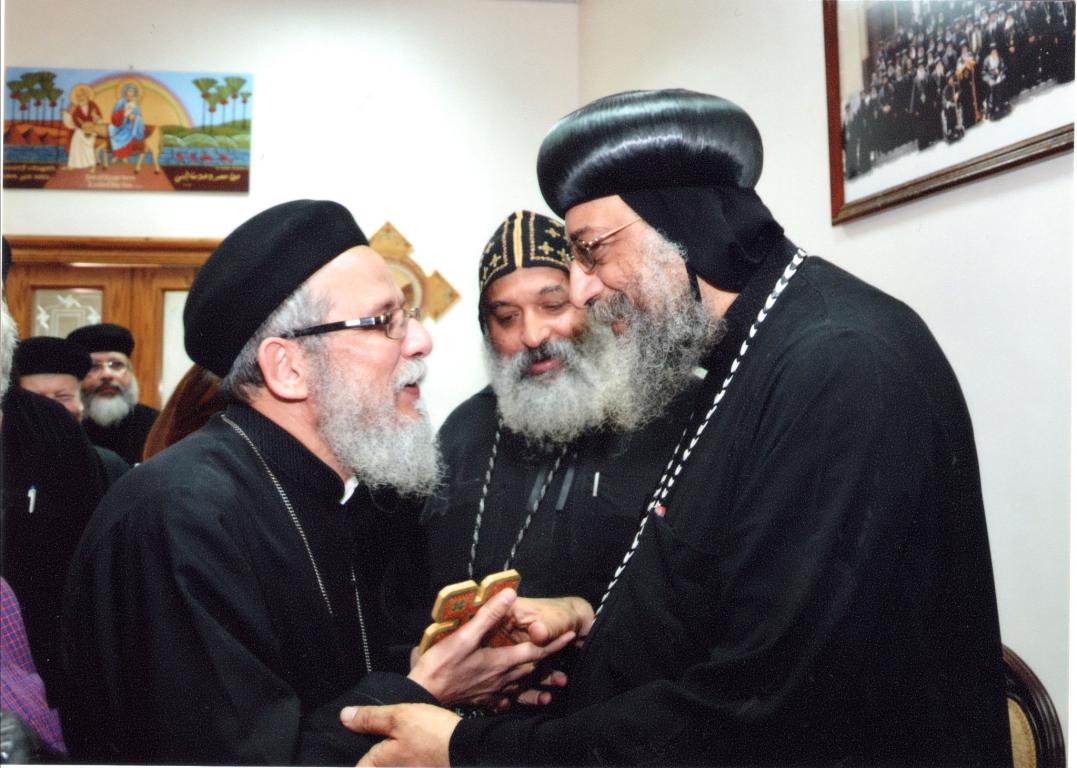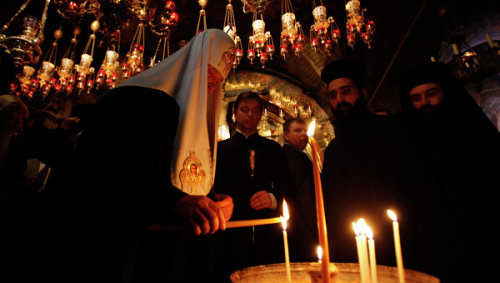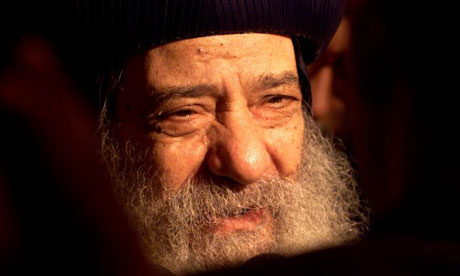
The word Icon comes from the Greek word ‘eikon’ meaning an image. In the
Orthodox tradition Icons have a great spiritual significance and role
in the liturgical and sacramental life of the Church.
The practice of
writing Icons in the Christian tradition was founded with Saint Luke,
who is believed to have written images of the Virgin Mary. Some of these
Icons still exist, such as the Theotokos of Tikvin. From then, this
tradition has been passed down in the Orthodox Church, as it was in the
Western Church until around the 1600’s. Icons are still used today in
Orthodox liturgical life and venerated as they represent the saints and
Martyrs in their heavenly bodies.
Icons serve many uses in the
Church and have done since the first centuries. One clearly important
role of Icons is education. Met Ware said that “He who lacks learning or
leisure to study works of theology has only to enter a church to see
unfolded before him on the walls all the mysteries of the Christian
religion.” This was a key part of Early Christianity since when few
could read the Homilies of a speaker and Icons of a Church were the
greatest source of Education.
Their second function is in the
Liturgical Worship of the Church. Icons play prominent roles such as in
procession and the sacraments. This is not in a worship based role but
in representation. When a liturgy happens it is not just a liturgy on
Earth but one in Heaven, making the representation of the saints
important since they are in attendance n the Divine Liturgy to receive
the portion of Christ as we do on Earth. We also see this with the use
of the icon of Christ in the sacrament of Confession, with our
confessions addressed to Christ through his Icon, as he receives out
confession alone through the priest as an Icon of Christ in himself.
Many
call this Idolatry but this definition and viewpoint simply show a lack
of understanding of icons and their theological importance rather than
any wrongdoing on the part of Orthodoxy.
There is in fact no
condemnation of iconography in its Orthodox form in the bible. They is
indeed condemnation of imagery of a human interpretation of the nature
of God, which is the reason I abhor some of those abominable works in
Catholic Cathedrals which Show the trinity or God with a big beard, but
no condemnation of Showing Christ in his earthly form as his apostles
saw him. I will explain the difference in the representation of God the
Father and God in the incarnation now.
The 10 commandments say
that “You shall not make unto the any Graven image…” explaining that God
is a “Jealous God” and therefore to make something and worship it is to
take away from the worship of one God. This is completely
understandable in context since there is no way in which people could
understand what God looked like, making an image of God an image of a
human interpretation of God. Yet Iconography after the Incarnation is
acceptable for this very reason.
Before the incarnation of God in
Christ, there was no image of God and no knowledge of his form and the
idea of looking upon God struck fear into the people. We know of this
through the Old Testament when those who glimpsed on God knew of this
radiance, as with Aaron fearing Moses due to this. They even veiled his
face so that they could not witness it, showing the humility and fear of
the people.
When Christ arrived, he gave God a form, so God
became matter in order to appear to us, becoming God in an earthly form.
He also told us not to fear his presence and welcomed people to him, a
stark distinction from the veiling and fear of the face of God. Christ
became matter so that we could see him and talk to him without having to
fear and with this we received an image of God which is not man made
but from God himself. Paul himself referred to the veil of separation
between humanity and the witness of God when he said “We are not like
Moses, who would put a veil over his face to keep the Israelites from
gazing at it while the radiance was fading away.” (2 Corinthians 13:3)
So Moses was told not to make Idols since they will always be of a God
we cannot see, and thus false but with the Incarnation we witnessed God
in his very form and thus have knowledge of this, to make an image of
what we have seen is not an Idol but a witness.
John of Damascus, in verbally annihilating the arguments of the iconoclasts in the 7
th
Council, explains this perfectly. He says that “In times past, God,
without body and form, could in no way be represented. But now, since
God has appeared in the flesh and lived among men, I can depict that
which is visible of God.” In portraying what God has revealed of himself
to us we are not sculpting Idols but showing the people what God has
shown us. If God did not want us to see this he would not have become
something we can see through his revelation in Christ and would not have.
With
the incarnation we have God in matter and no longer have to rely on a
human interpretation of God. This in itself means that Iconography can
show a true image of God without it becoming a human version and thus
Idolatry. God even made an image of himself In Christ, as Saint Paul
explains when he calls Christ "the image of the invisible God.” for
Christ is "the image of the invisible God. To hate God being represented
through a physical form is, in a way, to hate Christ. As Met. Kallistos
says of Iconoclasm, to refer to icons as Idolatry “is to betray the
Incarnation, by allowing no place to Christ’s humanity, to His body; it
is to forget that our body as well as our soul must be saved and
transfigured.”
There is also a large
difference between apparent worship and veneration. John of Damascus
reminds us that "under the Old Covenant God commanded images to be made:
first the tabernacle, and then everything in it." Indeed God orders
Moses to build the Ark and detail it with “two cherubim out of hammered
gold at the ends of the cover.” Even detailing greatly as to the
direction in which these should face. We know that the Ark was venerated
for its contents but God had ordered Moses to have craftsmen design
icons of heavenly beings.
The reason
given in tradition that Moses was accepted in this task, apart from it
being directly from God, is simply since it was not worshipped in the
place of God. This is the same with Icons. John of Damascus also
explains this, he says “I do not venerate the matter but I venerate the
Creator of matter, Who became matter for me, Who condescended to live in
matter, and Who, through matter accomplished my salvation; I do not
cease to respect the matter through which my salvation is accomplished.”
To
venerate an icon for what it represents is not Idolatry, unlike
worshipping an item for what it is. Through icons we see the heavenly
forms of Christ as well as our saints and Martyrs. Through asking the
saints to pray to God for us we are not worshipping them but praising
the holiness which God has bestowed upon them in the same way in which
one might show respect to a priest or even kiss the Cross or Gospel
book.
Through this veneration we are
also inspired to holiness and to emulate those that came before us and
to wish to live up to the example of another or ask them for assistance
is not Idolatry. As Saint Polycarp said to the centurion before his
Martyrdom “For Him, being the Son of God, we adore, but the martyrs
as disciples and imitators of the Lord we cherish as they deserve for
their matchless affection towards their own King and Teacher.” There is a
great difference between worship and veneration.



































